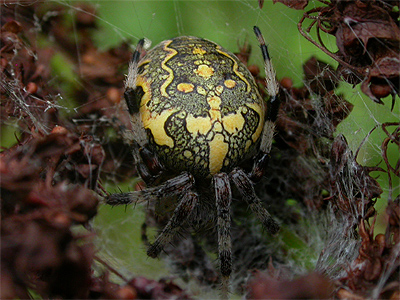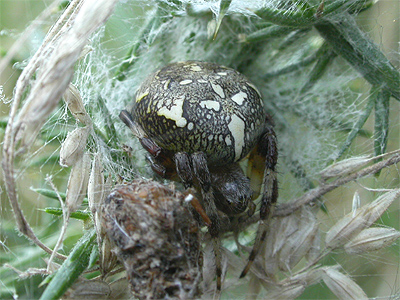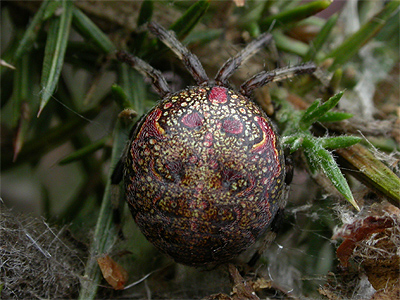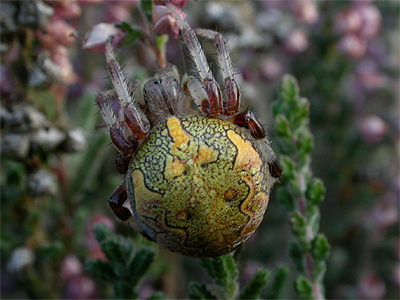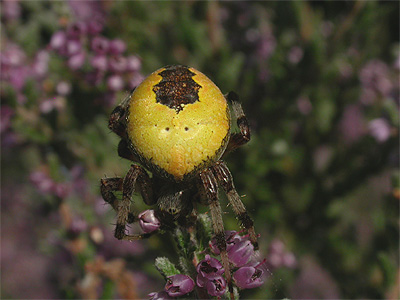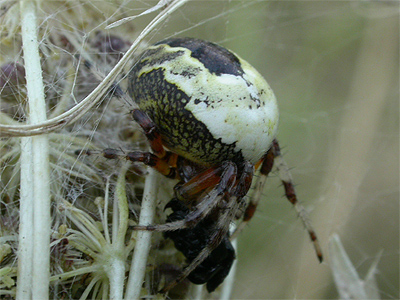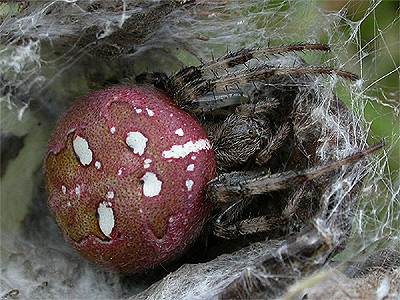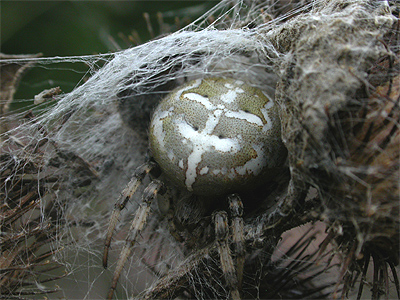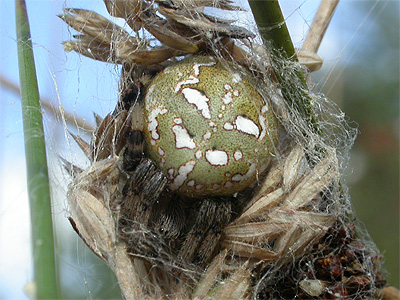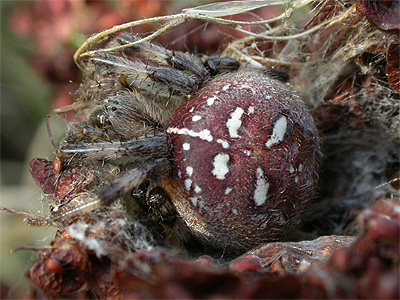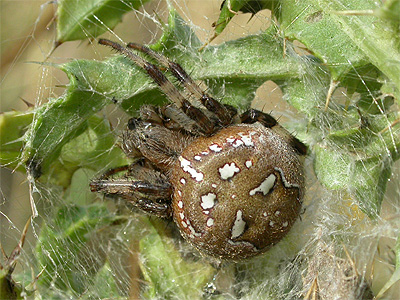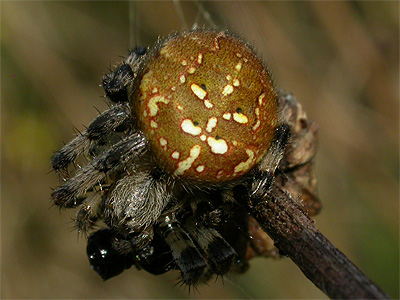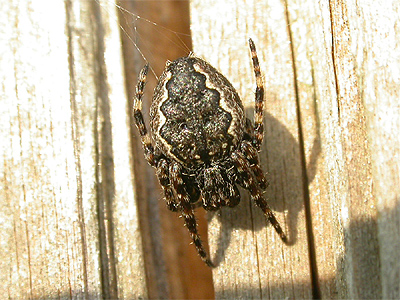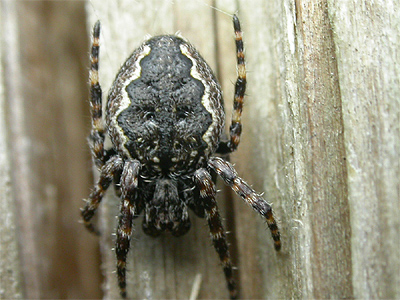| The identification of
many spiders to species' level, is often difficult, but
the three large orb-weaving spiders shown here, are
relatively straight-forward and soon become obvious. The three species concerned are Araneus
diadematus, Araneus marmoreus and Araneus
quadratus. Of the three, A. diadematus is
by far the most common overall, but at certain sites and
in certain habitats, A. quadratus dominates.
By late Summer and early Autumn, all three species
are mature and construct large orb-webs between suitable vegetation. We
have seen single webs of A. diadematus strung between trees in
Sherwood Forest over 12 feet apart, although the actual orb-web itself,
never meadures much more than 12 inches (30cm) across.
|
|
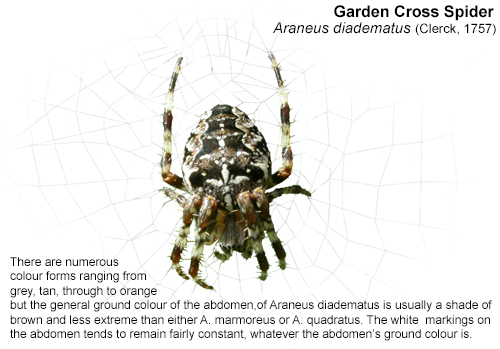 |
| A.
diadematus is the familiar Garden Spider, sometimes
referred to as the Garden Cross Spider. It often lives at
quite high density, with sometimes several webs per
square metre. This especially applies to certain areas
within Sherwood Forest CP, where all three species occur.
Araneus
quadratus is also often found living at such
density, but makes it web lower down (probably due to
frequenting more open grassy areas than A. diadematus).
It is especially common on Budby South Forest, but is
also present in large numbers on rough grassland at many
former Colliery sites. The females sit in an
umbrella-like structure during the day and which is
attached to grass heads, Gorse or Heather. Araneus
marmoreus constructs a similar shelter, but we tend
to find these slightly higher up in the shrub layer and
this is easily the less common of the three.
|


